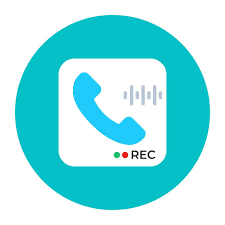Transcription Services provides audio and video transcription to thousands of clients worldwide.
Transcription service is a business service that converts speech (either live or recorded) into a written or electronic text document. Transcription services are often provided for business, legal, or medical purposes. The most common type of transcription is from a spoken-language source into text.
Transcription Services we Offer:
- Deepgram
- Aws Transcription
- Twilio Transcription

#Deepgram
The Deepgram platform, SDKs, and API, data scientists and developers can convert messy, unstructured audio data into accurate and structured transcriptions in batch or real-time—both on premises and in the cloud. Deepgram builds tailored speech models to optimize their transcription accuracy.
Examples of how Deepgram's technology might be used in different scenarios:
- Customer Service
- Media & Entertainment
- Healthcare
- Legal Field
- Accessibility
- Enterprise Communication

AWS Transcription refers to Amazon Web Services' transcription services, primarily through Amazon Transcribe. This service is designed to convert audio and video recordings into text, making it easier to process and analyze spoken content.
Here are some key features and uses of Amazon Transcribe:
- Automatic Speech Recognition (ASR)
- Custom Vocabulary
- Speaker Identification
- Punctuation and Formatting
- Real-Time Transcription
- Batch Transcription
- Integration with Other AWS Services

Customer Service
Businesses use Amazon Transcribe to transcribe and analyze customer service interactions, helping to improve service quality and gain insights into customer needs.
Media & Entertainment
Media companies utilize the service to transcribe interviews, podcasts, and video content for creating searchable archives and subtitles.
Healthcare
Healthcare providers might use Amazon Transcribe to convert doctor-patient interactions into text, aiding in medical record-keeping and documentation.
Legal
Law firms and courts use Amazon Transcribe to transcribe legal proceedings, depositions, and interviews, facilitating record-keeping and analysis.
Education
Educational institutions use the service to transcribe lectures and seminars, making content accessible to students and creating study materials.
Accessibility
Organizations can provide real-time transcription of events and meetings to assist individuals with hearing impairments.
Twilio offers transcription services primarily through its Twilio Media Streams and Twilio Programmable Voice products. These services enable users to convert voice interactions into text for various applications, including customer service, analytics, and compliance.
Here are some key features and uses of Twilio Transcription :
 01
01
Voice Transcription
Twilio provides transcription of voice calls, including both inbound and outbound calls. This is particularly useful for creating text records of customer interactions.
 02
02
Real-Time and Post-Call Transcription
Depending on the integration, Twilio can offer real-time transcription during calls or process transcriptions after the call has ended.
 03
03
Integration with Twilio Flex
Twilio's cloud contact center platform, Twilio Flex, can leverage transcription services to enhance customer service operations, enabling features like sentiment analysis and conversation insights.
 04
04
Customizable Transcription
While Twilio itself does not provide a standalone transcription engine, it integrates with third-party services like Google Cloud Speech-to-Text or Amazon Transcribe to handle the transcription process, allowing customization based on specific needs.
 05
05
Call Recording Integration
Twilio can record calls and then use transcription services to convert these recordings into text, which can be useful for compliance, training, and quality assurance.
 06
06
Support for Multiple Languages
Depending on the integrated transcription service, Twilio can support multiple languages and dialects.